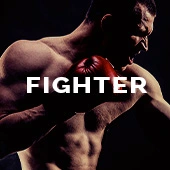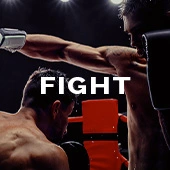When Terence Crawford was first being spoken about as an opponent for Saul “Canelo” Alvarez, I thought it was a joke.
It was the super-middleweight champion against a welterweight. It looked like little more than a money grab. I didn’t take it seriously.
When Canelo was knocking out Billy Joe Saunders and Caleb Plant – fellow super middleweights – he threw some menacing punches. Those same punches could seriously hurt a welterweight.
But that – particularly after watching Canelo-William Scull – seems a long time ago. Crawford has since won at 154lbs against Israil Madrimov, and Canelo hasn’t looked the same. Even if Scull’s lack of ambition makes that fight difficult to lean on, in his previous fight Canelo should have been capable of stopping Edgar Berlanga, who went toe to toe with him, and yet he couldn’t.
The intelligent Crawford has a great skill set – so good that, even with that kind of size difference, he’d have been able to survive. But even with their date of September 12 being officially confirmed at a time when their fighting has become less troubling, we were provided with another reminder of the growing disregard of the value of respecting weight divisions.
At 154lbs, Crawford is established in one of the most competitive of all weight divisions where he has several appealing would-be rivals. Canelo is also still yet to fight David Benavidez, who has been his most appealing opponent for years.
He looked a declining fighter against Scull, who fought with no ambition, and I can’t help but question how much that decline has been sped up by him twice moving up to 175lbs – first to fight Sergey Kovalev, when he was already established at 168lbs, and later to fight Dmitry Bivol – and then back to 168lbs once again. I also question how much harm it would do to his legacy if he loses to Crawford and is seen to have ducked Benavidez than it would have done if he simply fought Benavidez and lost.
Roy Jones Jnr and Sugar Ray Leonard are among the greatest fighters of all time, but Jones Jnr wasn’t the same when he returned to 175lbs to fight Antonio Tarver after beating John Ruiz at heavyweight – the atrophy started to set in – and Leonard suffered similarly when, after moving up to beat Donny Lalonde at 168lbs, he moved back to 154lbs and lost to Terry Norris. Moving down in weight rarely works.
Canelo-Crawford was announced the night before Naoya Inoue – who won his first title at 108lbs – stopped Ramon Cardenas at 122lbs. Plans for Inoue to participate in future fight at 126lbs are one thing, and not unthinkable, but talk of him fighting Gervonta “Tank” Davis – a big, explosive lightweight – makes no sense at all. Davis is a supreme talent who could instead fight Shakur Stevenson or Keyshawn Davis – how does Inoue even get mentioned? Inoue also has a much more natural rival in the 118lbs Junto Nakatani – a fight between them could be one of the best of all.
Succeeding from 108lbs through to 126lbs would once have seemed impossible. Succeeding from 108lbs to 135lbs almost definitely is. Handicapping the best fighters by demanding they fight so far beyond their natural weight divisions shouldn’t be the way those fighters are being asked to prove how great they are.
The risks being taken are then being compounded by the increase in ceremonial weigh-ins, which can mean fighters actually weighing in 36 hours before they fight, and an even more unfair advantage being given to the bigger man.
Somewhere along the line fighters were convinced by those around them that they could lose a ridiculous amount of weight in a short amount of time and then put it back on again, and that that would give them a significant size advantage over their opponents. Why are the authorities allowing that to keep happening?
How many more fights do we need to see like that between Errol Spence and Mikey Garcia in 2019? Garcia had looked terrific until then, but at welterweight – Spence was a very big welterweight, while Garcia won his first title at featherweight – he produced a tame performance and routinely lost.
Marvin Hagler never moved from 160lbs during his entire career, and no one questions how great he was – it’s widely recognized he’s one of the greatest middleweights of all. Being the king of a weight division – like Gennadiy Golovkin was in the modern era – proves greatness far more effectively than passing by, winning a title, vacating it and moving on.
There seems to be a growing school of thought that we don’t need to respect weight classes – rehydration clauses show that as well – and that regardless of weight we just need to see the best fight the best, but that’s dangerous, and wrong.
Russ Anber is the founder/CEO of Rival Boxing, as well as a highly respected trainer (of both pros and amateurs), a gym owner, a cut-man, an entrepreneur, a broadcaster and one of the best hand wrappers in the boxing business. Vasiliy Lomachenko, Oleksandr Usyk, Callum Smith, Janibek Alimkhanuly and Bakhram Murtazaliev are among the many top boxers Russ works with.




